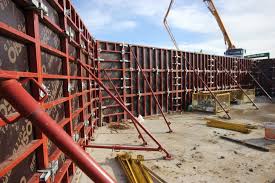Nov . 27, 2024 00:28 Back to list
Modular Climbing Formwork Solutions for Efficient Construction Projects
The Evolution and Importance of Climbing System Formwork in Modern Construction
In the ever-evolving landscape of construction, the demand for innovative and efficient building techniques is paramount. One such advancement is the climbing system formwork, a method that has revolutionized the way structures, particularly tall buildings and bridges, are constructed. This article explores the significance of climbing system formwork, its advantages, and the role of specialized factories in this niche industry.
Understanding Climbing System Formwork
Climbing system formwork involves a specialized technique used to create vertical forms for concrete structures as they ascend. Unlike traditional formwork systems that require manual handling and repositioning, climbing formwork is designed to climb the structure automatically or with minimal manual assistance. This method is particularly beneficial for constructing high-rise buildings, dams, and other structures requiring vertical reinforcement.
The core mechanism of climbing formwork is based on a series of panels that can be hydraulically or mechanically raised in synchronization with the height of the structure being built. This method not only enhances operational efficiency but also provides safety and stability during the construction process.
The Advantages of Climbing System Formwork
1. Efficiency One of the most significant benefits of climbing system formwork is its efficiency. The system can be repositioned quickly, significantly reducing downtime between concrete pours. This efficiency is crucial in high-rise construction, where time and resource management are critical.
2. Safety Safety is a primary concern in construction, especially when building tall structures. Climbing formwork minimizes the need for workers to operate at dangerous heights, as the formwork itself is designed to ascend as the building progresses. This mechanization reduces the risk of falls and other on-site accidents.
3. Quality Control The use of climbing system formwork allows for more precise control over the quality of the concrete poured. The panels are engineered to create smooth finishes, which enhances the aesthetic quality of the exposed concrete surfaces and allows for better integration with other construction processes.
climbing system formwork factory

4. Versatility Climbing formwork systems can be adapted to various shapes and sizes, making them ideal for unique architectural designs. They can accommodate complex structural requirements, including curved and irregular shapes, providing architects and engineers with greater design flexibility.
5. Cost-Effectiveness Although the initial investment in climbing system formwork might be higher than traditional methods, the long-term savings in labor, time, and materials make it a more cost-effective solution in high-rise construction projects.
The Role of Factories in Advancing Climbing Formwork Technology
Climbing system formwork is not just a product; it is the result of meticulous engineering and manufacturing processes that take place in specialized factories. These facilities are equipped with state-of-the-art technology and skilled labor capable of creating durable and reliable formwork systems.
5. Research and Development Continuous innovation is vital for keeping up with the demands of modern architecture and construction. Factories dedicate resources to research and development, ensuring that climbing system formwork evolves in response to industry needs. This includes the integration of advanced materials, like lightweight yet strong composites, and automation technologies that enhance the efficiency of the formwork systems.
6. Customization Each construction project is unique, and climbing formwork factories often work closely with architects and engineers to provide customized solutions that meet specific project requirements. This collaboration leads to enhanced functionality and efficiency in the construction process.
7. Sustainability As the construction industry increasingly focuses on sustainability, climbing system formwork factories are also striving to adopt greener practices. This includes using recyclable materials and implementing energy-efficient manufacturing processes, contributing to more sustainable construction projects.
Conclusion
Climbing system formwork represents a significant advancement in the construction industry, addressing the challenges of building taller and more complex structures efficiently and safely. The role of specialized factories in the design and production of these systems is crucial, driving innovation and ensuring that construction projects meet modern demands for efficiency, safety, and sustainability. As urbanization continues to rise around the globe, climbing system formwork will undoubtedly play a pivotal role in shaping our skylines and infrastructure.
-
High-Quality U Head Jack Scaffolding – Reliable Scaffolding Jack Head Manufacturer & Factory
NewsJul.08,2025
-
High-Quality I Beam H20 Leading Timber Beam H20 Material Factory, Exporters & Manufacturers
NewsJul.08,2025
-
High-Quality Powder Coating Steel Formwork - Durable & Corrosion Resistant Solutions
NewsJul.07,2025
-
Inclined Column Formwork Supplier – Durable & Precise Solutions for Unique Structures
NewsJul.07,2025
-
High-Quality Water Stop Solutions Trusted Water Stop Company & Suppliers
NewsJul.07,2025
-
High-Quality Formwork Material Supplier Reliable Manufacturer & Factory Solutions
NewsJul.06,2025